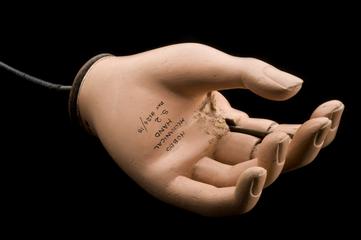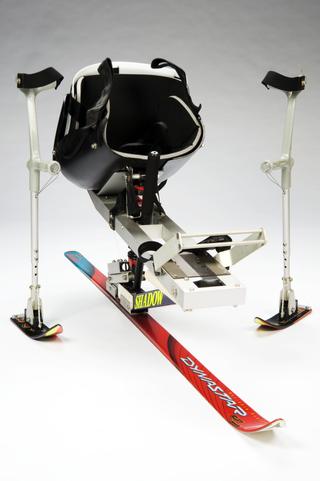
Openshaw-type artifcial hand, Birmingham, England, 1916-1918
- Made:
- 1916-1918 in Borough of Birmingham

"Openshaw" carrying hand with broad leather wrist gauntlet. Spring thumb with catgut thong and small ring, for opening by pull-cord. Made by Anderson & Whitelaw, c.1914-18 war.
Thomas Openshaw (1856-1929) was a senior surgeon at Queen Mary’s Hospital in Roehampton, England, an institution established in 1915 to deal with the growing number of amputees created by the First World War. He invented this prosthetic hand. The wooden hand combined elements of a ‘lifelike’ artificial hand, which tended to have little practical use, and a functional artificial arm that often ended in a hook. It was designed with the little finger and ring finger fixed in position and reinforced with metal, so bags and other items could be easily carried. The thumb could also be moved using the pull-cord.
Made by Anderson & Whitelaw, the hand was designed to be screwed into a prosthetic arm. Queen Mary’s Hospital remained the major hospital for soldiers who had lost limbs, eventually treating just over half of the 41,000 servicemen who lost one or more limb.
Details
- Category:
- Orthopaedics
- Object Number:
- 1999-594
- Measurements:
-
overall: 100 mm x 310 mm x 120 mm, .37kg
- type:
- artificial hand
- credit:
- Richmond Twickenham and Roehampton Healthcare NHS Trust




